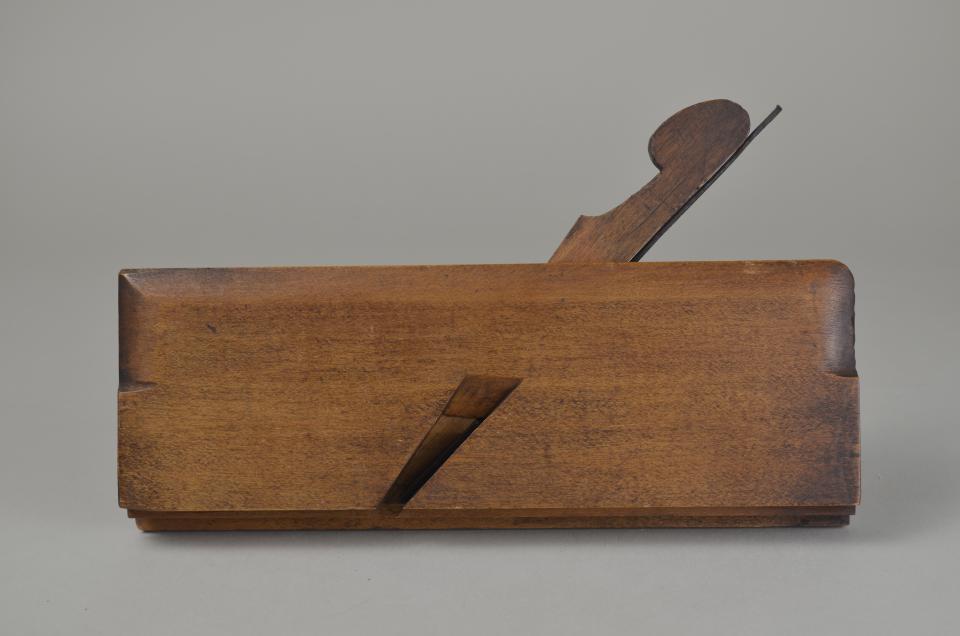
L: 23.5cm W: 2.9cm H: 13.9cm
a- L: 23.5cm W: 2.9cm H: 8.5cm
b- L: 16.6cm W: 2.4cm H: 0.9cm
c- L: 18.0cm W: 1.1cm H: 0.3cm
A wooden grooving plane consisting of 3 parts.
a- The body is rectangular and made of a brown hardwood. The width is consistent throughout. The throat cuts diagonally through the middle of the body and is exposed over its bottom half. The sole is flat with an embedded wooden strip acting as a depth stop. The back bottom edge extends down to create a fence. Stamps on the toe read: "H. SHARP"; "DUBLIN"; "I BLOWER"; "1/4". A stamp on the heel reads "I BLOWER".
b- The wedge is made of a hardwood similar to the body. It tapers to a blunt point one end and is rounded in an elliptical form on he other. A cut-out below the head allows for easy handling.
c-The iron is a narrow strip of dark grey metal. It abruptly widens near the cutting edge. The cutting edge is flat and perpendicular to the length. The width of the cut is 1/2".
Grooving planes are used to cut straight grooves, or rabbets, into a working piece. They are traditionally used for drawer bottoms or rear walls. They can be used in conjunction with a corresponding tonguing plane, which creates two parallel slits in a piece of wood. These create two pieces that fit together perfectly for joining work. Other names include dado planes, ploughing planes and matching planes when combined with a tonguing plane.
